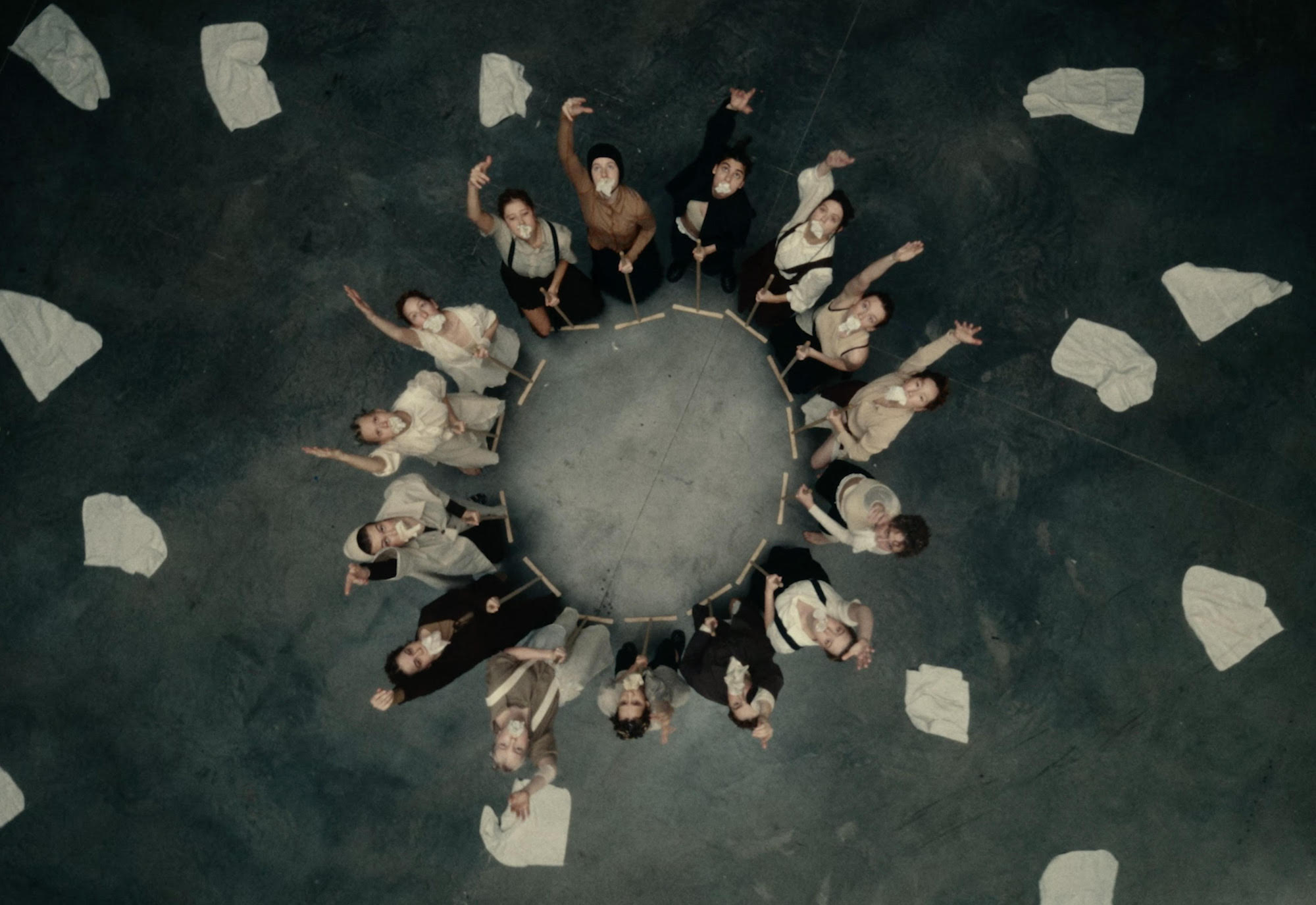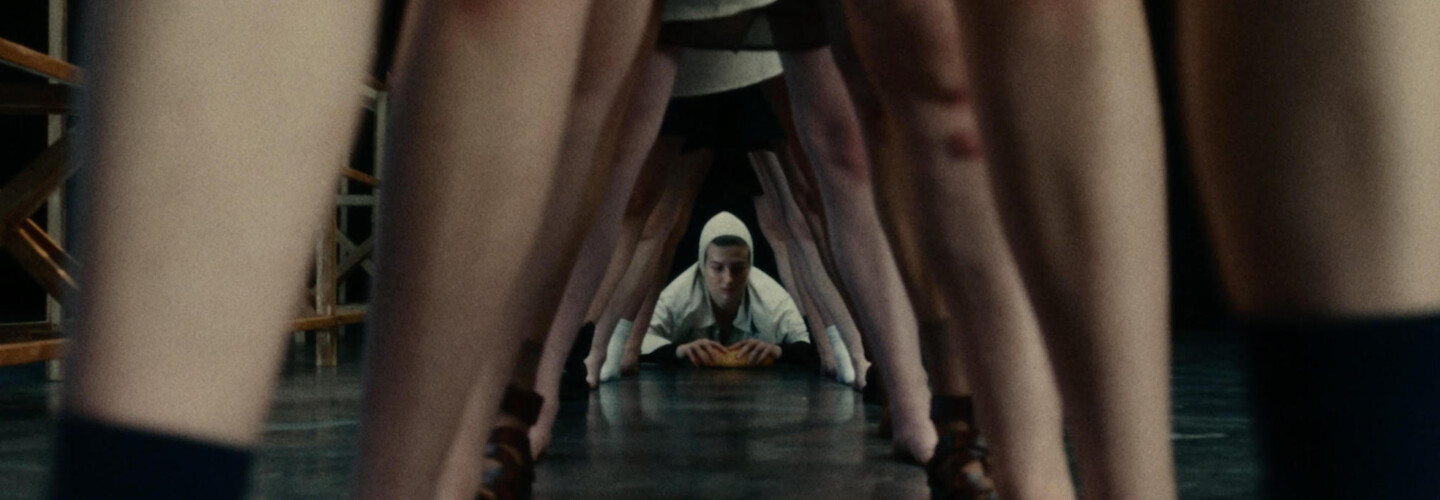
For millions of Russians, the invasion of Ukraine presented something of an identity crisis. Previously only identifying with one place for their entire lives while seeing themselves as part of a wider world, being Russian is now something to be ashamed of. While the Russian state should certainly be condemned, it’s often blameless individuals who feel the brunt of negative associations and blanket government actions. For example, the Russian-Tajik superstar and activist Manizha, who represented Russia at Eurovision 2021, finds herself stuck between the country that welcomed her as a child during the Tajik civil war and being currently hindered in her work for human rights. Standing Between Two Walls, directed by DN Alum Director Dasha Guschina, captures this paradox excellently, using movements pulled from everyday life to capture the complicated plight of the diverse, modern, conflicted Russian woman. We caught up with Guschina to talk about working with Manizha, using a stark backdrop to tell her story and the difficulties of being against the war but still being stereotyped alongside all Russians.
I remember watching Manizha at Eurovision – the last time Russia participated following Little Big (who I think would’ve won!) getting let down by the pandemic and then Russian being cancelled due to the war. She certainly seems like an amazing woman! How did you manage to get in touch with her and decide to start working together?
Our mutual friend introduced us to each other last summer and we began discussing the idea of working together but couldn’t figure out what exactly we’d like to create until Manizha sent me a song of hers which I instantly liked. It happened last October. By that time I’d already had some story written down and a few rehearsals with the dancers had already taken place. Suddenly we felt the story and the song were a perfect match. The rest is history.
I respect Manizha a lot for speaking out loud about the subject.
One can certainly feel the pain for Russian-Tajik Manizha, especially given her work with human rights as well. Do you think there might not be enough awareness for Central Asian people living in Russia, who may owe a lot to the country but now feel betrayed?
I’m afraid I’m in no position to answer this question as I know so little about the struggles these people go through but I respect Manizha a lot for speaking out loud about the subject. She’s a very brave girl who’s not afraid to bring out and discuss some very troubling and unsettling issues regarding society – she’s not just a talented singer but an author with her own voice.

It tackles cancel culture with regard to Russia as well. Do you feel that there is a certain unfairness towards Russian artists, especially if they are on the side of peace and against the regime?
It seems weird and irrelevant and kind of cowardly to whine and complain about unfairness towards us Russians while there’s a war out there and people’s lives are being destroyed. But it’s painful no matter if it’s fair or not. You wake up one day and realise you’re an enemy to the whole world – there’s your own country whose current political behavior you don’t agree with while the rest of the world thinks you don’t do enough to stop the things that are actually out of your control. In order to be a ‘good Russian’ you should be either ready to go to prison or leave everything – your family, your friends, your job – behind to become one of the refugees and beg for shelter and still be despised for the fact that you’re Russian.
You wake up one day and realise you’re an enemy to the whole world.
How did you think about adapting the lyrics in terms of the song? Was there a lot of collaboration with Manizha herself?
There wasn’t much thinking when it came to adapting the lyrics because, as I said, it was an instant match with the story. David Oganian and Manizha who produced the song collaborated a lot on enhancing the atmosphere of the video through micro-sampling without losing the charm of the demo version of the song. They managed to make it both dreamy and relaxed, combining an R&B sound with a trip-hop vibe. As a result, one can feel the delicacy of Manizha’s lyrics while staying in touch with structure and movement.

It follows Slaughterhouse-Six in the way that you have a stark backdrop and allow the dancing to shine through. Where did you find this warehouse and how did you think about the ways in which you could light and film it?
The location is just a black filming stage. The filling of the scene is dictated by the concept and at the same time is a synergy of the artistic styles of both the director and DP. The scene was shot using the Alexa Mini LF and Leitz Prime Lenses on the crane with a dolly. On one hand, it was important for us to create a generic background for this story, as it is valid for refugees and migrant workers of any country and can exist anywhere. On the other hand, by highlighting the characters with dramatic contrast, we wanted to emphasise their emotions, give them a leading role in the video, and reveal their voice, which emerged at the end.
One can feel the delicacy of Manizha’s lyrics while staying in touch with structure and movement.
The images of the women holding white tissues are very strong, a simple plea for peace in a difficult time for Russia and Ukraine. In fact, the colour white features throughout the film, as does the idea of cleaning. Do you see women as the key to a brighter future?
Married women in Ancient Russia used to cover their heads. Some of them when seeing their husbands off to a war or a long journey took their headscarves off and waved goodbye to show that they were no longer wives. We didn’t use white tissues as a symbol of sudden freedom – just a farewell moment with the ones who might never come back – and then something that you shut your mouth with as you are not allowed to talk. Shut your mouth, clean your house, raise your kids, and grieve quietly. I don’t think gender is the key to a brighter future – I believe it’s the ability to respect and cherish each other. Men can do that as well as women can.




Walk me through the choreography, which blends militaristic, precise movements with domestic chores. What was it like finding the right balance?
Choreography in music videos is usually perceived either as a part of the scenery, the background or as the main ‘object’. I decided to take a risk and make it very simple – so simple that we managed to introduce Manizha into a completely finished production in one rehearsal. I started to worry that I was suppressing my choreographic ambitions here, and questioning myself if I should make it more complex – more beautiful, if you will. It was a ‘Director vs Choreographer’ kind of battle. I thought it over carefully and decided that, in this case, the choreography was just a tool that should work for the story.
I don’t think gender is the key to a brighter future – I believe it’s the ability to respect and cherish each other.
We turned to everyday movements and gestures that are familiar to everyone but something was still missing. I had to find the definition of the regime and what happens when it gets broken down, and how to show it in my choreography while remembering that ‘less is more’. We looped those everyday gestures and increased the speed to the point when everything started to fall apart. People are not machines though even machines fail.

What are you working on next?
I have several projects ready to be shot. We’re currently looking for ways to start the production process. The challenge is to do something careless, frivolous and funny this time because Slaughterhouse-Six and Manizha’s music video are quite dark and gloomy. I’d like to explore how to deal with humor and irony.


